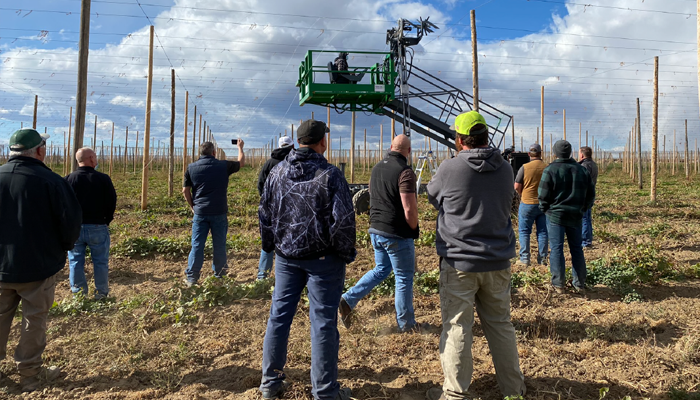We are always looking to the future. The future holds unknowns in terms of new challenges and new solutions. We hope that the future brings growth for ourselves and our businesses. What does the future look like for specialty crop farming? Where is the industry heading as a whole? Does change always mean improvement?
From day one, the 2nd Sight team wanted to bring technology to an industry that often falls behind the curve in terms of what technology is available and how quickly new tech is accepted and adopted. However, initial enthusiasm is often followed by apathy, skepticism, or rejection altogether. Our story often feels like one of Sisyphus rolling that rock up the hill. Will the adoption of new technology “make or break” a farming operation in the next few years? Or will growers get by with the same methods? Will these “tried and true” systems, tools, and methodologies work despite changing circumstances?
Over the last year and a half, our engineering team has been hard at work developing a vehicle that will have various attachments to automate labor-intensive jobs associated with growing hops. The most important innovation of the MAV (Multifunctional Agriculture Vehicle) is the automated tying mechanism that will attach twine to the top trellis cables. This job has always been done by crews of workers tying hundreds and thousands of knots by hand every spring.
Using automation equipment and new technology to decrease labor expenses is a common theme in Precision Ag conversations. If crop prices remain the same and expenses are increasing, a farm only has one option to increase profitability—decrease expenses. Labor will almost always be a company’s biggest expense.
2nd Sight reached a big milestone this month by performing field trials of the MAV and its ability to consistently tie hundreds of knots to trellis wires in a hops yard with only one vehicle operator. It was a first for the industry to see this in action after previous failed attempts at a machine. During a grower demo in Prosser, we ran the machine down a few poles, and it tied wonderfully. When the machine was turned off and the Q&A began, our CEO/President asked what everybody thought about the system. The most audible comment, “Too good to be true”.
I found an interesting article that was written by Alexander Winton who built and sold the first automobile in the US. This is what he said as he reflected on his work:
When I first contemplated the application of gasoline for vehicles, I had a bicycle plant in Cleveland. Because bikes interested me, my mind naturally turned to something a rider wouldn’t have to push and keep pushing if he was trying to get some place. But the great obstacle to the development of the automobile was the lack of public interest. To advocate replacing the horse, which had served man through centuries, marked one as an imbecile. Things are very different today. But in the ’90s, even though I had a successful bicycle business, and was building my first car in the privacy of the cellar in my home, I began to be pointed out as “the fool who is fiddling with a buggy that will run without being hitched to a horse.” My banker called on me to say: “Winton, I am disappointed in you.”
Change is the only constant and there are a lot of companies out there striving to ease the pain points of the specialty crop industry with new technology. The numbers may pencil out for an acceptable ROI, but it still takes a shift in one’s mindset to adopt a new tool or piece of equipment. This can be hard because of minimal empirical evidence of success. It takes a leap of faith from a few to change the industry. It also takes trust that somebody’s idea is a good one. Or, should we go back to using the horse and plow?
